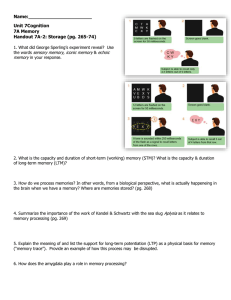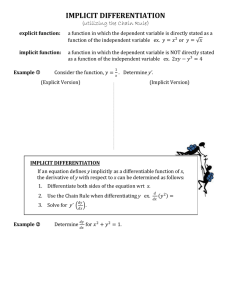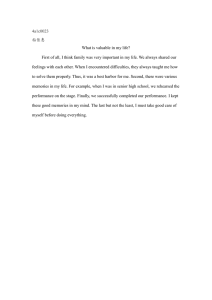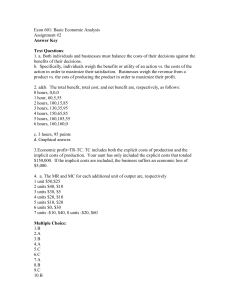Explicit and Implicit Memory
advertisement
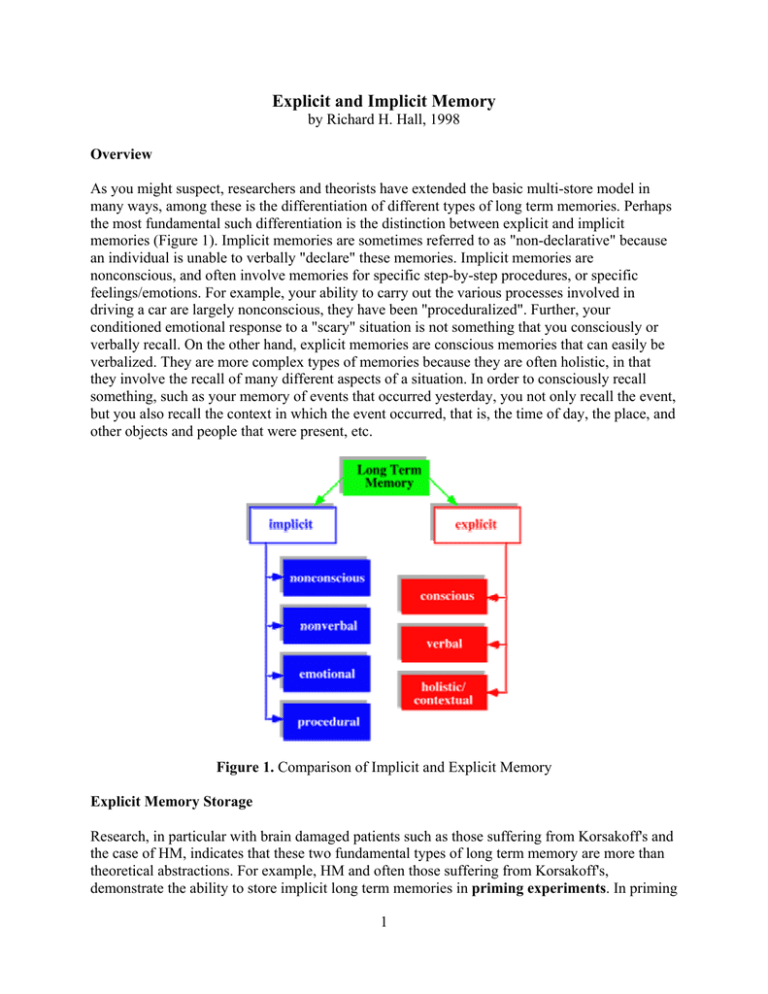
Explicit and Implicit Memory by Richard H. Hall, 1998 Overview As you might suspect, researchers and theorists have extended the basic multi-store model in many ways, among these is the differentiation of different types of long term memories. Perhaps the most fundamental such differentiation is the distinction between explicit and implicit memories (Figure 1). Implicit memories are sometimes referred to as "non-declarative" because an individual is unable to verbally "declare" these memories. Implicit memories are nonconscious, and often involve memories for specific step-by-step procedures, or specific feelings/emotions. For example, your ability to carry out the various processes involved in driving a car are largely nonconscious, they have been "proceduralized". Further, your conditioned emotional response to a "scary" situation is not something that you consciously or verbally recall. On the other hand, explicit memories are conscious memories that can easily be verbalized. They are more complex types of memories because they are often holistic, in that they involve the recall of many different aspects of a situation. In order to consciously recall something, such as your memory of events that occurred yesterday, you not only recall the event, but you also recall the context in which the event occurred, that is, the time of day, the place, and other objects and people that were present, etc. Figure 1. Comparison of Implicit and Explicit Memory Explicit Memory Storage Research, in particular with brain damaged patients such as those suffering from Korsakoff's and the case of HM, indicates that these two fundamental types of long term memory are more than theoretical abstractions. For example, HM and often those suffering from Korsakoff's, demonstrate the ability to store implicit long term memories in priming experiments. In priming 1 experiments subjects are given some cue, which consists of a part or portion of some target stimulus, and they are asked to identify or recall the stimulus. This "recall", in the case of the study of implicit memories, can be exhibited nonverbally, such as in a drawing experiment. In this experiment subjects are presented with a series of line drawings of some familiar objects (e.g., an elephant) with most of the lines missing. Most subjects cannot identify the objects with most of the lines missing, so they are presented with a series of drawings, each more complete, until they are able to correctly identify each drawing. Retention is measured an hour or so later when they are presented with the same series of drawings. The difference between the number of successively more complete drawings it took them to originally identify an object and the number of drawings it took during the second stage, is the measure of retention. So, for example, if it took 5 successively complete drawings to recognize the elephant initially, and two on the second test, the difference is thought to represent memory of the drawing from the first test. Although this retention clearly represents transfer from short term to long term memory, when HM participated in this exact experiment he demonstrated significant improvement. However, when asked if he remembered having completed this task before, he said that he has never seen the pictures before, despite the fact that his improved score clearly demonstrated he had an implicit memory of the task. This research demonstrates dramatically that implicit and explicit memory are represented by different neurological systems, and that the hippocampus-fornixmammillary body circuit is important for the storage of explicit, but not implicit memories. Implicit Memory Storage The research above leads to the obvious question, so what structure is important in the storage of implicit memories? Conditioned emotions, described in a previous module, serve as an example of implicit memories. The amygdala plays a critical role in this type of learning/memory. Thus, it appears that, at least with respect to conditioned emotions, the amygdala plays an important role in long term memory storage. One very clever and interesting experiment illustrates the differential role of the amygdala vs hippocampus in implicit vs explicit memories. Researchers compared three patients, one with lesions to the hippocampus, one with damage to the amygdala, and one with both. An emotional conditioning experiment was set up in which these patients were shown a series of colored lights, and each time a blue light was presented a loud unpleasant boat horn was blown (Figure 2 illustrates this conditioning). After several trials, the blue light was shown by itself in order to measure the conditioning (implicit memory), and only the patient with hippocampal damage showed such a conditioned response. Conversely, when the subjects were asked what had happened (explicit memory), only the patient with amygdala damage reported that the horn went off every time the blue light came on (though the patient showed no emotional response to the light.) The other two patients did not remember the episode at all, though the patient with only hippocampal damage had an implicit memory of the event as represented by a conditioned emotional response. (Figure 3 illustrates these findings and their implications.) 2 Figure 2. Emotional Conditioning Experiment Used to Assess the Role of the Amygdala and Hippocampus in Explicit and Implicit Memory. Figure 3. Illustration of the Findings of the Emotional Conditioning Experiment 3
